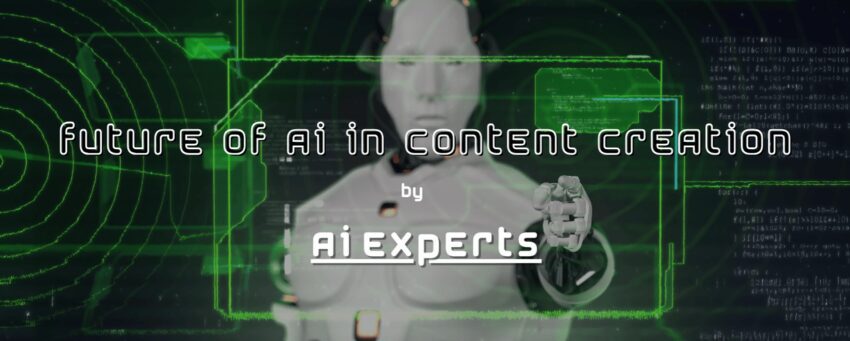How to Detect AI-Generated Content (And Why It Matters)
Understanding the Rise of AI-Generated Content
The digital landscape has seen a dramatic surge in the use of AI-generated content. With advanced tools like OpenAI’s GPT, Google’s Gemini, and other large language models (LLMs), businesses, bloggers, and marketers can produce vast amounts of text quickly. However, this presents a new challenge: distinguishing human-written content from that created by AI. Understanding how to detect AI-generated content has become a critical concern for educators, publishers, journalists, and SEO professionals.
Why Detecting AI Content Matters
AI-generated content poses various challenges and risks. These include:
- Misinformation and fact distortion: AI tools may present fabricated information.
- Academic dishonesty: Students may submit AI-written work, bypassing the learning process.
- SEO penalties: Google is increasingly focusing on detecting low-quality, AI-spun content.
- Loss of authenticity: Brands risk alienating their audiences with robotic or repetitive voices.
Hence, having the ability to identify AI-written text is essential for ensuring credibility, originality, and compliance in digital publishing.
Key Signs of AI-Generated Text
1. Repetitive or Generic Language
AI content often includes repetitive phrasing and generic expressions. While it may be grammatically perfect, it lacks the nuanced diversity of human thought. For instance, phrases such as “It is important to note that…” or “In conclusion, we can say that…” often appear unnaturally frequently.
2. Lack of Personal Experience or Perspective
AI-generated content rarely includes first-hand anecdotes, opinions, or emotional resonance. If a blog post never uses “we,” “I,” or speaks from personal insight, it’s likely generated by an algorithm rather than a human.
3. Overuse of Predictable Patterns
AI often relies on predictable sentence structures and uniform syntax. Sentences will often start with a subject followed by a verb and an object with minimal variation. A lack of rhetorical devices, humor, sarcasm, or cultural references is another red flag.
Effective Methods to Detect AI Content
1. Use AI Content Detection Tools
There are several tools specifically designed to detect AI-generated text. Some of the most accurate and widely used include:
- Originality.ai – Created for content marketers and SEOs, this tool offers high accuracy in identifying GPT-generated content.
- GPTZero – A favorite among educators for detecting student plagiarism using AI.
- Writer.com AI Detector – Offers a simple analysis with instant feedback on text origin.
- Copyleaks AI Content Detector – Widely used for academic and professional content analysis.
These platforms evaluate factors such as perplexity and burstiness to estimate whether text is AI-written.
2. Check Metadata and Author Signals
AI tools often embed metadata or leave signatures that advanced users can detect. For example, examining HTML or CMS publishing data can indicate whether content was auto-generated.
Additionally, evaluate the author profile. A missing bio, lack of social presence, or absence of writing history can indicate AI involvement.
3. Evaluate the Depth of Insight
AI content, while informative, rarely dives deep into subject matter expertise. It tends to aggregate knowledge from web-scraped sources without offering new angles, case studies, or real-world application. Human experts, on the other hand, provide unique perspectives.
4. Conduct Manual Linguistic Analysis
Human writing is inherently imperfect. Look for:
- Sentence fragments
- Colloquialisms
- Unique storytelling
- Unexpected transitions
These elements signal genuine human creativity, which most AI currently struggles to replicate convincingly.
The Role of Google and SEO in AI Content Detection
1. Google’s Stance on AI Content
Google has refined its algorithm to reward helpful, original content. Its Helpful Content System targets AI-written articles that fail to provide real value. Pages deemed overly optimized or automatically generated can be de-ranked or penalized.
2. E-E-A-T Signals (Experience, Expertise, Authoritativeness, Trust)
To maintain high SEO performance, content should fulfill E-E-A-T principles. AI tools struggle to simulate first-hand experience and genuine authority, especially in specialized niches like medical, legal, or financial content.
3. Human Touch Enhances Rankings
Google favors content that includes:
- Multimedia integration (images, videos, infographics)
- Cited references and credible sources
- Engagement elements like FAQs, polls, or user comments
- Contextual linking to trusted domains
These are hard to automate and often need human input.
Practical Steps to Avoid SEO Penalties from AI Content
1. Blend AI with Human Editing
AI can assist in drafting content, but human editors should refine, customize, and fact-check every piece. This hybrid approach maintains efficiency while preserving authenticity.
2. Add Real Value and Insights
To stand out, content must go beyond surface-level. Include:
- Expert interviews
- Original research
- Personal case studies
- User-generated content
These elements are impossible to replicate using AI alone.
3. Keep Content Updated and Relevant
AI models often rely on outdated information. Regularly updating content to reflect current trends, breaking news, or regulatory changes ensures continued relevance and ranking power.
Ethical Implications of AI-Generated Content
1. Transparency and Disclosure
Publishers and brands should consider disclosing when AI tools assist in content creation. This builds trust with readers and complies with emerging regulations on AI transparency.
2. Plagiarism and Copyright Issues
Even if AI rephrases existing content, it may still result in unintentional plagiarism. Relying solely on generative tools increases the risk of duplicate content penalties and legal complications.
Conclusion: The Future of AI Content and Human Oversight
Detecting and managing AI-generated content is no longer optional. As algorithms evolve and AI becomes more sophisticated, the human ability to discern authenticity, apply critical thinking, and inject creativity remains irreplaceable.
Organizations that blend AI capabilities with human intelligence, editorial oversight, and transparent practices will thrive in the content ecosystem. Those that fail to adapt risk falling behind — or worse, being penalized for relying too heavily on automation.
If you want to read more information about AI in Digital Marketing just click on it!

